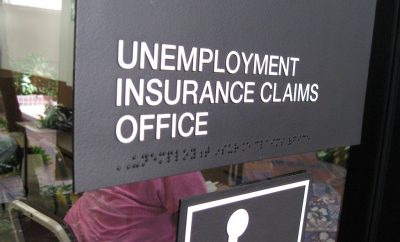 Image courtesy of [U.S. Department of Agriculture via Flickr]
Image courtesy of [U.S. Department of Agriculture via Flickr]
Law
Entrepreneurial Spirit?: Behind the Sale of Food Stamps
In American culture, there is a deeply ingrained moral value placed on work. On having an “entrepreneurial spirit” and a strong work ethic. It is part of what makes America a great country. “Greed is good” may be the slogan we use to describe capitalism, but for those of us who get up in the morning to go to work, it isn’t greed that motivates us. It is the sense of purpose and dignity that we get from our jobs and from doing those jobs well. And, from needing to eat.
Most Americans agree that there is a standard of living that we should not allow our citizens to fall below, even if it means that we use some of our resources to help them. We don’t think it is morally right for fellow citizens to starve, especially children. Our policies on public assistance reflect that belief and try to provide the very basics of life to everyone.
These policies also reflect a tension between American generosity and the American ideal of the entrepreneurial spirit. In an effort to both prevent hunger and to protect the American work ethic we reformed assistance programs to eliminate cash benefits and to tie receiving benefits to work or the search for work. It has led many recipients of SNAP assistance, more commonly referred to as food stamps, to sell their benefits for cash rather than using them for food. This is a crime and may carry fines, jail time, and a loss of benefits. One that we spend a lot of time and effort trying to eradicate. But should we? Or should we be turning a blind eye to, or maybe even encouraging, the sale of food stamps for cash?
Say It With Cash
Take your net income per month and divide it by 30. For most of us, the amount is probably more than $2. Yet many Americans are living on $2 a day or less.
In the book “$2 A Day: Living on Almost Nothing In America,” authors Kathryn Edin and Luke Shaefer go into a detailed explanation of the history of welfare reform in recent decades and a series of interviews with Americans who live on $2 a day or less. In October 2015, PBS interviewed Edin who spoke about some of the book’s major themes:
The book’s central theme is that while food is the most important necessity for people in poverty, they also have other needs that can only be met with cash. Goods like electricity, clothing, and phones might be considered luxury items but are vital tools in looking for work. Because they have no other source of income they end up selling things to get cash–like plasma, sex, and food stamps. The cash that they get is able to be used for necessities that food stamps can’t pay for.
The beauty of cash is that it allows you to purchase whatever you need with it. If at that particular time your most pressing need is clothing, cash allows you to sacrifice your need for food in favor of clothing. It gives the person the choice of how to best allocate their resources. The downfall of course, from the point of view of the taxpayer, is that a recipient of cash may decide that drugs or alcohol, and not food, is their most pressing need and use the cash for that. It is partly this fear of misuse that encouraged the reformation of welfare from cash benefits to benefits like SNAP, where recipients are locked into only buying food with their EBT cards. It also drives the movements emerging in many states to prevent these benefits from being used for certain luxury food items or junk food items.
Contract Of Adhesion
For many, the main concern with the sale of food stamps is not that people are selling them but how much they are getting. Selling your food stamps is a terrible deal. The going rate for $100 worth of food stamps is between $50-60 dollars depending on what part of the country you are in. By selling your food stamps, you’re losing about half of your purchasing power. In some places, if the store owner is particularly friendly, it can be a little better, but generally, sellers take a loss.
The relationship between food stamp buyer and seller is an unorthodox example of the legal concept of a contract of adhesion. A contract of adhesion is a legal phrase for “raw deal.” Essentially, when the bargaining power of the parties is very unbalanced, so much so that the weaker party really can’t meaningfully negotiate the terms of the contract, courts may take a look and invalidate the contract or provisions of the contract that are “unconscionable.” Typically, contracts of adhesion are things like insurance contracts, mortgages, and credit cards. The little guy versus the big guy. These contracts are often “boilerplate” meaning that they are pre-written and the same for everyone. The little guys here aren’t special and don’t really have a way to haggle with the big guy to get a better deal. So courts will give those contracts a closer reading in a light that favors the little guy.
Selling your food stamps is a lot like that. For one thing, if you need the cash you NEED the cash. Just like someone who is buying a house really does need a place to live and maybe can’t negotiate with the lender. Only perhaps more so because a home buyer doesn’t necessarily need that specific house. The cash buyer may not also have the luxury of shopping around for the best rate. Just as a home buyer may not have enough good options for a line of credit, the cash buyer may not have enough potential buyers they can go to–there may only be a few people willing to buy food stamps in a given area.
The illegal nature of the sale has the effect of making the contract even more unfair for the seller because the buyer is charging a fee to assume that risk. The greater the risk of a fine or jail time to the buyer, the more the money cost. So instead of getting $60 for your $100 worth of food stamps you might get $50. These are the same issues that prevent the seller from negotiating for a better price. Someone might be perfectly willing to give them $85 in cash for $100 in food stamps. But sellers may be reluctant to shop around because doing so increases the likelihood that they could be caught. Increasing sting operations, which are designed to stop the sale of food stamps, may only drive the price down and may not have diminished sales meaningfully.
This video from Democracy NOW! provides another account of how SNAP recipients are selling their food stamp benefits.
In 2012, the USDA’s Office of the Inspector General, which is in charge of prosecuting SNAP fraud, devoted half of its resources to combating SNAP fraud and abuse. This includes both fraud in collecting benefits when you shouldn’t as well as “trafficking,” the official term for selling food stamps. That year it investigated 15,000 stores and did 4,500 sting operations. Out of the 15,000 stores, 2,100 of were either shut down or sanctioned, meaning that 14 percent of the stores were punished. The 4,500 undercover investigations resulted in 342 convictions, about 0.75 percent.
The problem with the selling of food stamps is that we aren’t sure what the sellers will be buying with their cash. Most of us are sympathetic when we hear about a woman who sells her food stamps to buy diapers, which you can’t buy with food stamps. Even if that activity is illegal, many of us do not find it to be quite so immoral. But because the sale of food stamps is a contract of adhesion that mother, and many like her, is able to buy a lot fewer diapers than she normally would be able to after selling her food stamps. And we fear that she won’t be using it to buy diapers at all but to buy alcohol or drugs.
This is a legitimate fear. Changing the program to one that is purely cash assistance would allow recipients to use the money on anything they want to. That is both the benefit and the drawback of that change. They may choose to buy diapers or electricity, or they may buy vodka. There would be no way to effectively control their spending if the benefit was pure cash.
The Parable of The Talents
There was one story in “$2 A Day” of a SNAP recipient spending her benefits on junk food. Rather than buying healthy foods, she chose to spend it partly on transportation (through an illegal conversion from food stamps to cash) and partly on cups and Kool-Aid. She was able to make popsicles and then sell them for a dollar each–increasing her income with that initial investment. Rather than taking the 50 percent value of her food stamps in cash and buying her other necessities, she took that cash and turned it into more cash.
She’s a criminal and an entrepreneur. The cash from the food stamps was a greater benefit to her than the food stamps themselves. So how do we craft a policy that will protect the taxpayer interest in keeping that money from being spent in inappropriate ways while still promoting the core American value of the entrepreneurial spirit?
Proposed Reforms
Reformers from all points on the political spectrum have advocated amending welfare benefits such as SNAP and TANF (Temporary Aid To Needy Families) in an attempt to help those programs combat poverty in a more meaningful way. Many of these reforms focus on trying to change the incentives for beneficiaries by encouraging behaviors that are thought to alleviate poverty and provide social benefits, particularly marriage, in addition to encouraging work. Republican presidential hopeful Jeb Bush proposed eliminating the various programs that we call “welfare” (TANF, SNAP, etc.) and instead provide states with block grants so that they can choose how to provide benefits. Currently, states have a lot of leeway in how they structure their benefits–which leads to a lot of differences in the support people can receive in various states–but they are all within the framework of meeting federal government criteria to get funding. That usually means work requirements. Eliminating the need to satisfy federal requirements would allow states to experiment further.
One positive aspect of that approach is to use federalism to our advantage and allow states to each try a slightly different method of delivering benefits to low-income individuals. But it does not change the need that many poor individuals have for cash benefits who qualify for SNAP but not TANF. States are unlikely to adopt less stringent work requirements for aid, in fact, the trend has been in the opposite direction. In Maine work requirements were tied to food stamp benefits in 2015, which resulted in a sharp reduction in the number of people receiving SNAP benefits.
Other Possible Solutions
One solution might be to develop a hybrid system for benefits. Like most of the changes proposed it would require more of an investment in the program. But we could set up a system where the SNAP benefits are primarily for food, with a small portion of the benefits made available in cash as well. That cash might be used for bad purposes, but if only a portion of the benefits was available in cash then not all of the benefits would be “wasted.” Some would still need to be used for food though they could still be sold on the black market. The initial investment would be in determining the correct ratio of cash to food stamps but it wouldn’t require as much monitoring as other options.
There is a government program already in existence, TANF, which does provide cash assistance to families that qualify. This program was designed as a replacement to Aid To Families With Dependent Children (AFDC) and sought to tie cash assistance to work requirements. To get funding for the program from the federal government, states must maintain certain percentages of working recipients. The goal of tying work requirements to the receipt of assistance is to encourage people to seek work and to make sure that families do not develop a cyclical dependence on TANF. There are also time limits placed on the benefits for that same reason.
The problem is that for many people, particularly after the Great Recession, they are unable to find employment that can satisfy these work requirements. This has cut the amount of people receiving cash assistance drastically since 1996. In 1996, 68 out of 100 families in poverty received TANF. In 2013, only 26 out of 100 families in poverty received it. Cutting the number of people who are eligible makes it so fewer people receive benefits, but that does not actually reduce the number of people in need. Even if TANF was an effective program to assist the working poor it does nothing for families who have fallen out of the mainstream economy almost completely.
Another option is to increase the number of vendors of legitimate products that we want people to purchase who accept food stamps. Instead of making food stamps into cash just make them more like cash. Encourage, or require, utility companies and clothing stores to accept EBT cards as payment. That way recipients can use an EBT card to pay for electricity or clothing without having to take the loss of purchasing power that accompanies turning it into cash on the black market.
There are some programs that attempt to deal with the needs for a phone and for utility subsidies for low-income Americans. For example LIHEAP (Low-Income Home Energy Assistance Program) provides federal funding to states to assist families with their utility costs. However, each state can set its own eligibility standards, which is true of the other programs as well. As a result, the rate of people receiving benefits ranges widely across states. In states where you need to receive TANF in order to qualify for LIHEAP, the non-working are once again left out.
A final option would require more manpower to distribute aid but might do the most to both encourage personal responsibility on the part of the benefits recipients as well as eliminate potential fraud: working with beneficiaries to help figure out what their greatest needs are and then tailoring their benefits accordingly. The poor are not a monolithic group. Those in rural areas may be able to supplement their diet with home-grown food and so may need less in food stamps but more in their transportation budget. Someone who is poor in an urban area might be able to travel on foot while they hunt for work but because they live at a shelter they need a cell phone to be able to contact potential employers. Matching the benefits more closely to the individual needs satisfies our core value of encouraging personal responsibility while also protecting our interest in only spending our tax dollars on items we approve of.
Conclusion
SNAP recipients selling their benefits for cash is a growing phenomenon that is unlikely to go away even with more vigorous efforts to combat it. The types of needs that the poor have here in America almost require the use of cash rather than food stamps alone. Even so, Americans struggle with how to balance our values: concern for the poor and the promotion of the entrepreneurial spirit.
Resources
Goodreads: $2.00 A Day: Living On Almost Nothing In America
Fox News: State Food Stamp Purchases
The New York Times: Food Stamp Fraud, Rare But Troubling
Cornell University Law School: Legal Information Institute: Contract of Adhesion
CBS: Food Stamp Recipients Selling Benefits For Cash
United States Department of Agriculture: Food and Nutrition Service: Fraud
The Weekly Standard: Food Stamp Trafficking Up 30 percent From 2008-2011
The American Prospect: Stop Worrying About Food Stamp “Fraud”
Government Accountability Institute, Profits From Poverty: How Food Stamps Benefit Corporations
SNAP to Health: The History of SNAP
Center on Budget and Policy Priorities: Policy Basics: An Introduction to TANF
Journalist’s Resource: Inequalities In U.S. “Safety Net” Programs For The Poor
CNN Politics: Jeb Bush Releases Welfare Reform Proposals
International Business Times: Which US States Have The Most Welfare Program Benefits?
The National Review: Getting Welfare Right








Comments